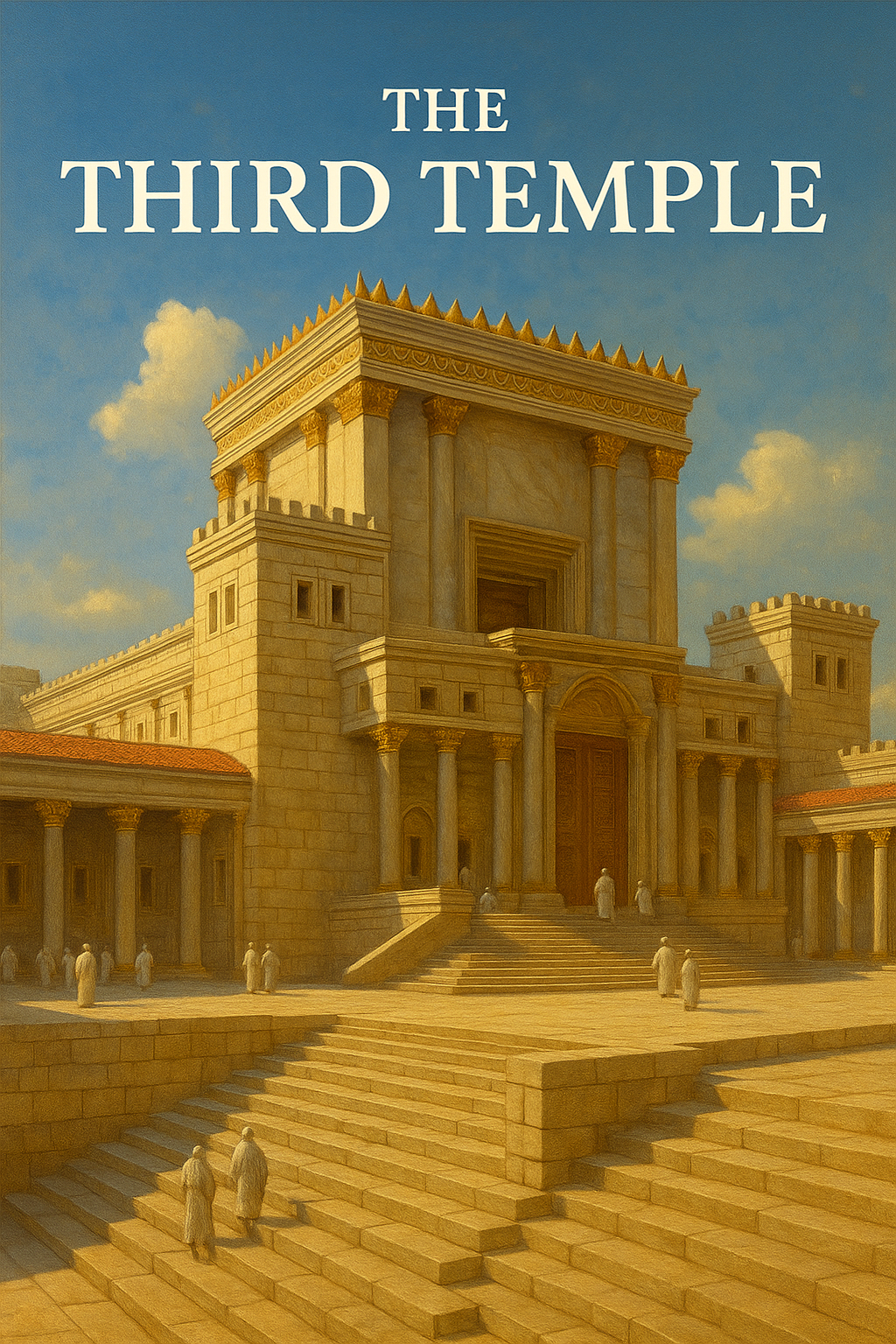In both Christian theology and Kabbalah, the progression of the Temples mirrors humanity’s spiritual evolution through four cosmic worlds: Assiyah (Action), Yetzirah (Formation), Beriah (Creation), and Atzilut (Emanation). Each Temple reflects a higher stage in the Tikkun (repair) process and a deeper revelation of the Divine Presence in creation.
1. The First Temple – Solomon’s Temple
- World: Assiyah (World of Action)
- Stage: Tohu (Chaos)
- Built By: King Solomon
- Who Dwelt: Ark of the Covenant — Shekhinah
- Essence: Divine Presence entered a physical space through ritual and sacrifice, but overwhelming light combined with human ego and idolatry led to collapse.
- Fall/Completion: Destroyed due to imbalance, pride, and idolatry.
- Sacrifices: Whole burnt offerings (Olah), peace offerings (Shelamim), sin offerings (Chatat), guilt offerings (Asham). These helped align the physical world with divine order.
- Temple Structure: Outer Court (open to Israelites), Holy Place (for priests), and Holy of Holies (only High Priest once per year).
2. The Second Temple – Herod’s Reconstruction
- World: Yetzirah (World of Formation)
- Stage: Initial Tikkun (Repair)
- Built By: Ezra and later renovated by Herod
- Who Dwelt: Messiah (Yeshua/Jesus)
- Essence: The Son of God entered this temple in human form to initiate the great healing. His rejection deepened the exile.
- Fall/Completion: Destroyed due to spiritual blindness and inner division.
- Sacrifices: Continued the First Temple system, but their spiritual power waned.
- Temple Structure: Similar layout, with additional restrictions imposed by Roman occupation. Outer courts included the Court of Women and Court of Gentiles.
3. The Third Temple – The Church, the Body of Christ
- World: Beriah (World of Creation)
- Stage: Inner Tikkun (Mystical Repair)
- Built By: Yeshua HaMashiach through His body and resurrection
- Who Dwelt: The Holy Spirit
- Essence: The Temple became inward. Believers became living stones, forming a spiritual dwelling. The Shekhinah entered hearts, not stone.
- Fall/Completion: Still active; the Church persists in spiritual warfare and witness.
- Sacrifices: Sacrifices of praise, thanksgiving, faith, martyrdom, and love. Romans 12:1 describes the body as a “living sacrifice.”
- Temple Structure: No physical walls. All believers have access to the Holy of Holies through the blood of the Lamb (Hebrews 10:19).
4. The Final Temple – The Temple From Heaven
- World: Atzilut (World of Emanation)
- Stage: Yichud (Union)
- Built By: God Himself
- Who Dwelt: The Father (Yahweh), unified with all redeemed creation
- Essence: Divine presence enters creation fully; the Temple becomes the Lamb and the City (Revelation 21:22). This is not built with hands, but descends in wholeness.
- Completion: Fulfilled, not fallen. Eternal unity.
- Sacrifices: No sin offerings. Only thanksgiving, joy, and praise (Psalm 50:14). These are eternal acts of resonance, not appeasement.
- Temple Structure: No veil, no exclusion. All have access. The Tree of Life and River of Life flow from its center.
The Kabbalistic Meaning of the Temple Structure:
- Holy of Holies: Keter – the unknowable source
- Holy Place: Tiferet – the harmonized divine expression
- Outer Court: Malkhut – the realm of manifestation and action
Each part reveals a stage in divine descent and ascent.
Disclaimer on the Abomination of Desolation
The structure built by the Antichrist, lasting 80 days and sanctified by the False Prophet, is not counted by God as a true temple. Though it may mimic the sacred, it is an abomination—a desecration of divine order. As prophesied, God will send His witnesses (Revelation 11) to rebuke, expose, and overthrow it. This counterfeit temple is a final test of discernment before the descent of the true heavenly Temple.
In summary, the journey of the Temples reveals not only the spiritual evolution of humanity, but also the divine strategy of descent, indwelling, and union. From physical to spiritual, from exclusion to embrace, the Temple becomes the map of redemption itself.


